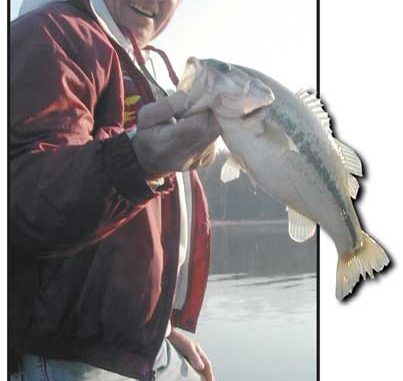
January is a tough month for fishing in North Carolina. It’s really winter now, and January and February are the two coldest months of the year.
That said, anglers have three options. If they really want to brave the cold weather and fish, I’d suggest trying one of the power-plant lakes with a warm-water discharge, such as Hyco, Belews Creek, Norman or Wylie.
The only problem with fishing at a warm-water discharge lake is typically there isn’t a lot of room. At Wylie, if you put 10 or 12 boats in the area where the warm water is coming into the lake, anglers and boats usually will be right on top of each other. Still, the fish definitely are more active when you can find water that’s at least 50 degrees or warmer.
I know you can fish 60-degree water at a lot of the hot hole lakes. When the water temperature gets below 50 degrees, bass start to really slow down, and anglers are pretty much stuck fishing for them real deep with a jigging spoon.
If you decide to fish a warm-water discharge lake, bass will be pretty shallow, unless there’s some kind of cover in the deeper water or some kind of edge or ledge. You usually don’t want to fish any deeper than 7 or 8 feet.
I like to start by fishing the bank with a little crankbait such as a Rapala DT-6 or DT-10, a spinnerbait or a jig. You have to fish these baits a little more slowly than you normally would.
One good thing about fishing a warm-water discharge lake is you’re almost always fishing where there’s some current. Fish tend to bite a little better in current.
And when you’re fishing a warm-water discharge, pay attention to the wind direction. The warm water that’s pouring out of a discharge can be sent in different directions by the wind.
The hot hole at Lake Norman, for example, when the water pours out of it, the wind can carry it across the lake toward McCrary Creek, up the lake toward the Rt. 150 bridge or down the lake toward the mouth of Mountain Creek.
The second option for fishermen are boat shows, and this is a great option if you’re thinking about buying a new boat or trading in your old one. Boat shows — the Greensboro and Raleigh shows are the best for bass fishermen — are really good times to get a great deal on a boat.
There are two times when you can really get a good deal — at a boat show or at the end of the season in July and August when manufacturers are getting ready to send out new models and dealers are looking to get rid of the old ones.
A lot of times manufacturers provide dealers with incentives for boat shows that can add up to a $2,000 to $3,000 savings for a fishermen who buys that boat. Most of the time, you’re going to get a packaged boat, but sometimes a dealer will have some specials that he’s pushing.
Finally, if you’ve fished the hot holes and gone to the boat show and gotten all your tackle updated and you’re still bored, January is a great time to put fish attractors such as rock piles or brush piles in a lake.
Lake levels are usually down during winter; there aren’t as many people out there; and you can ride a lot and see the kinds of structure and cover your lake has — and place some of your own where you want.
What types of artificial structure and where you should put it depend upon how you like to fish. I know people who make rock piles during winter and win a lot of tournaments each spring and early summer. Brush piles seem to work a lot better in deeper water later during summer and the fall.
If you’re putting out rock piles — most of which go in shallow water — you need to make one big enough to hold two or three fish.
If I was going to make a rock pile at a lake, I’d want to make it at least as big as the sofa in my living room. It doesn’t have to be high off the bottom, but it helps if it’s close to deep water.
If you can put the bow of your boat almost on the bank, while the back of your boat is in water that’s deeper than 8 feet, that’s the perfect kind of place to put a rock pile. It’s an ideal place for big fish to get in the spring and early summer.
As far as brush piles are concerned, I like to cut down a decent-size tree — 8 to 10 inches in diameter. I’ll trim the limbs the full length of the tree, and may cut out the top. I want to be able to work my lure through it. I usually anchor brush piles by attaching them to cinder blocks.
One thing to think about is the direction you want your brush pile to face. If you put it in deep water, you want to be able to retrieve your bait from the trunk out to the end of the tree because you’re less likely to get a lure hung up at a place where a branch comes off the trunk. So if you like to set up at a deep-water spot and cast toward the bank, you’ll want the stump nearest the bank, with the top of the tree closest to your boat.
If there’s anything else you can do in January, let me know.
I’m out of ideas.




Be the first to comment